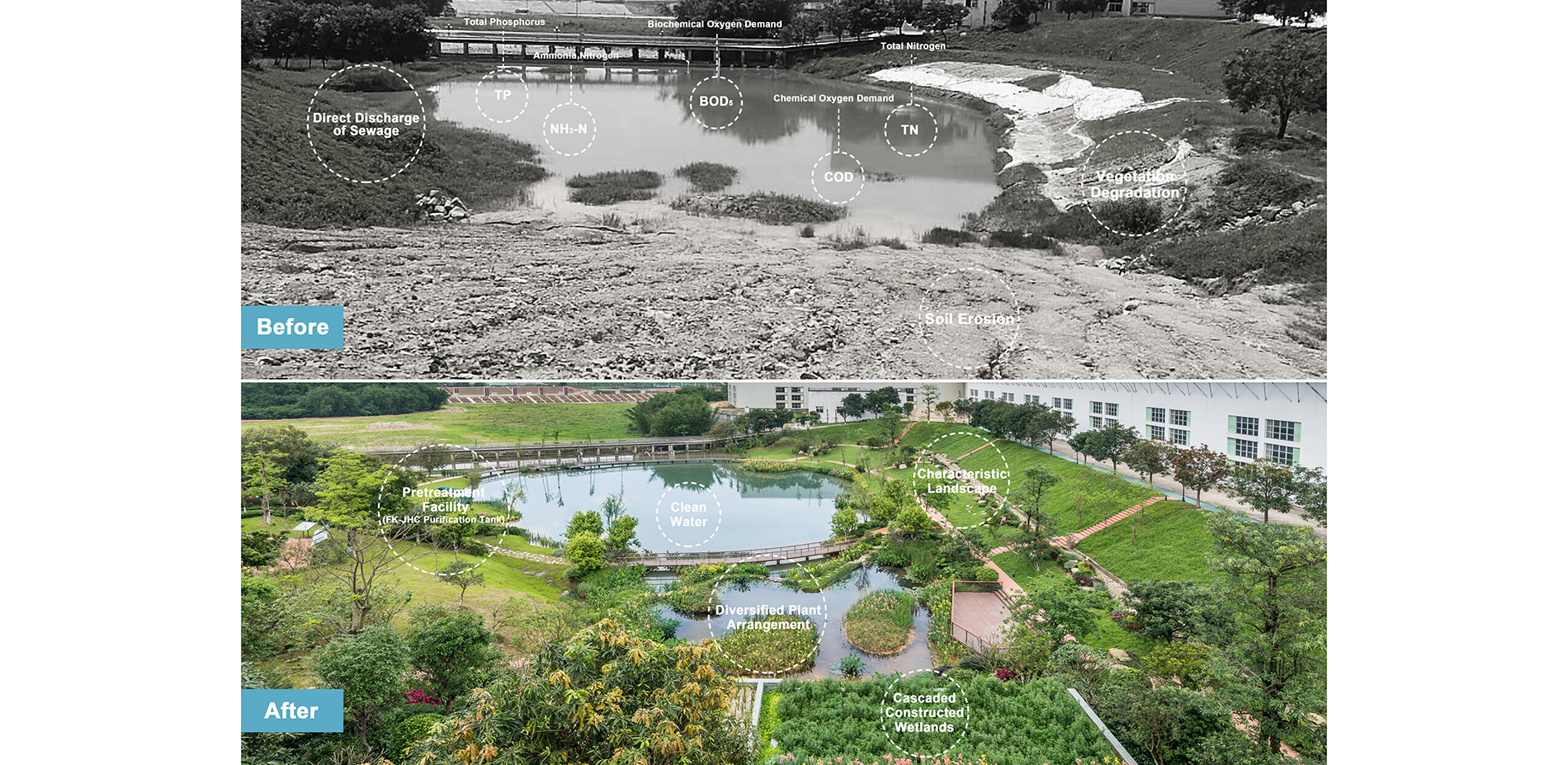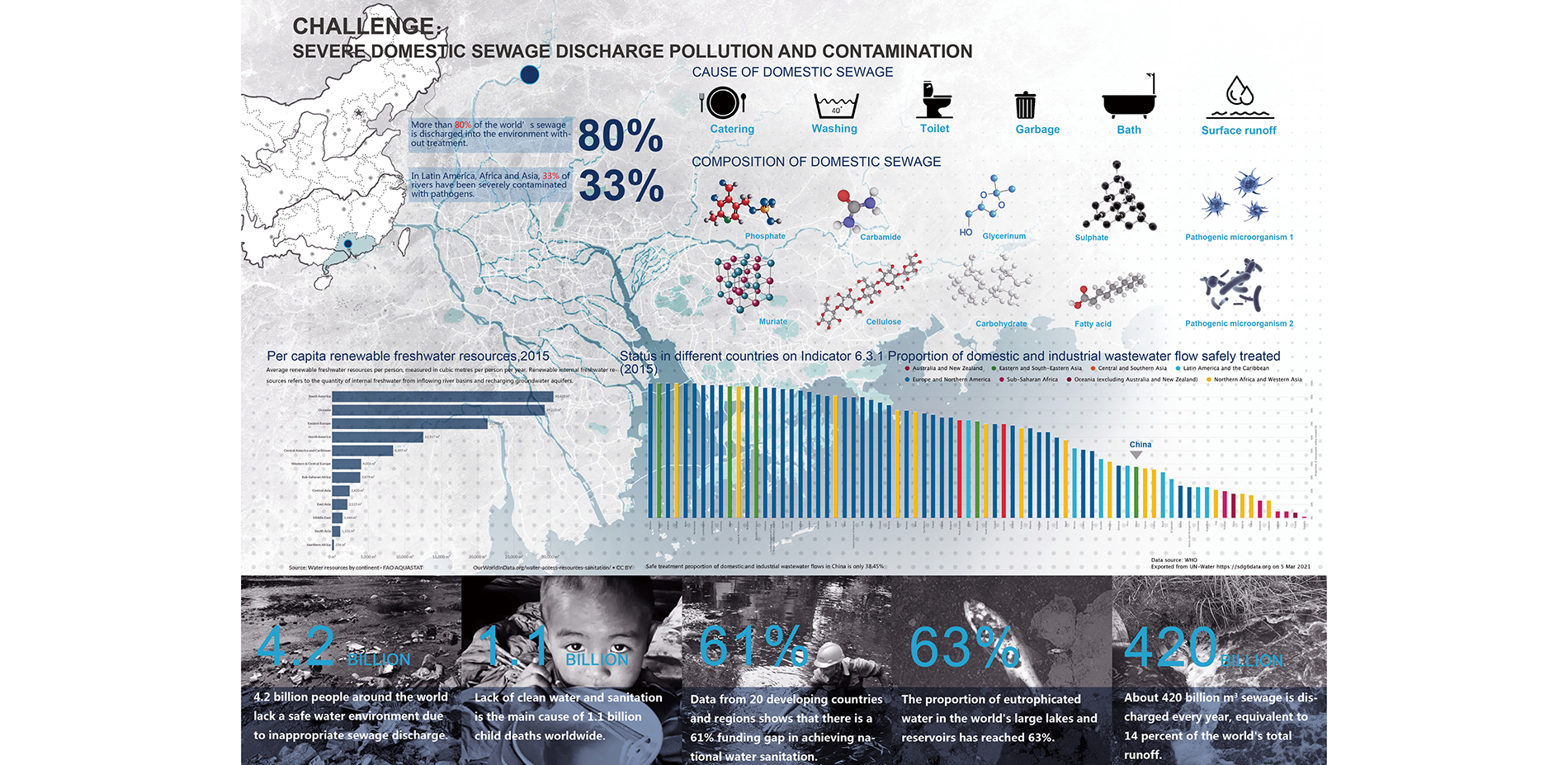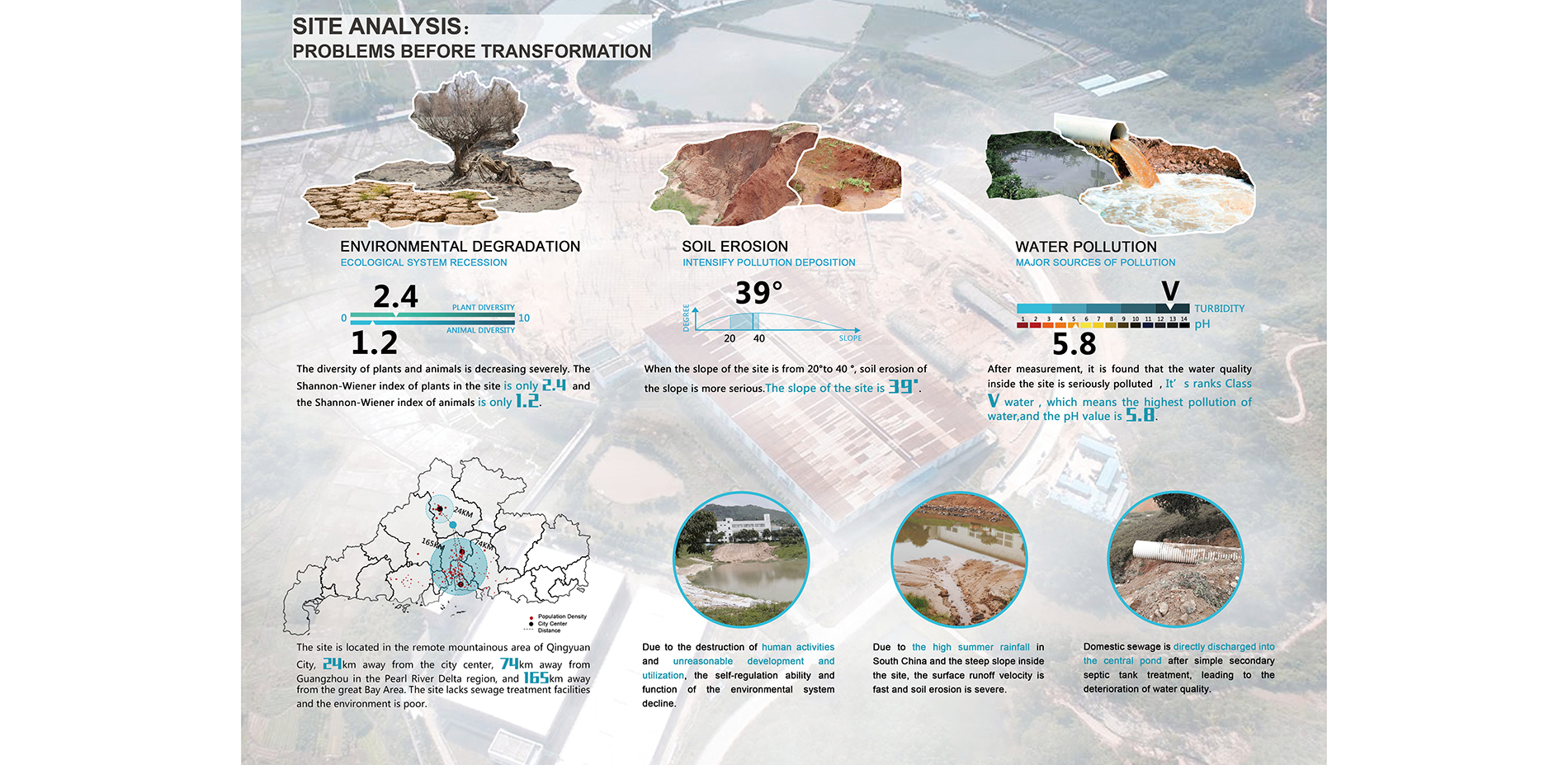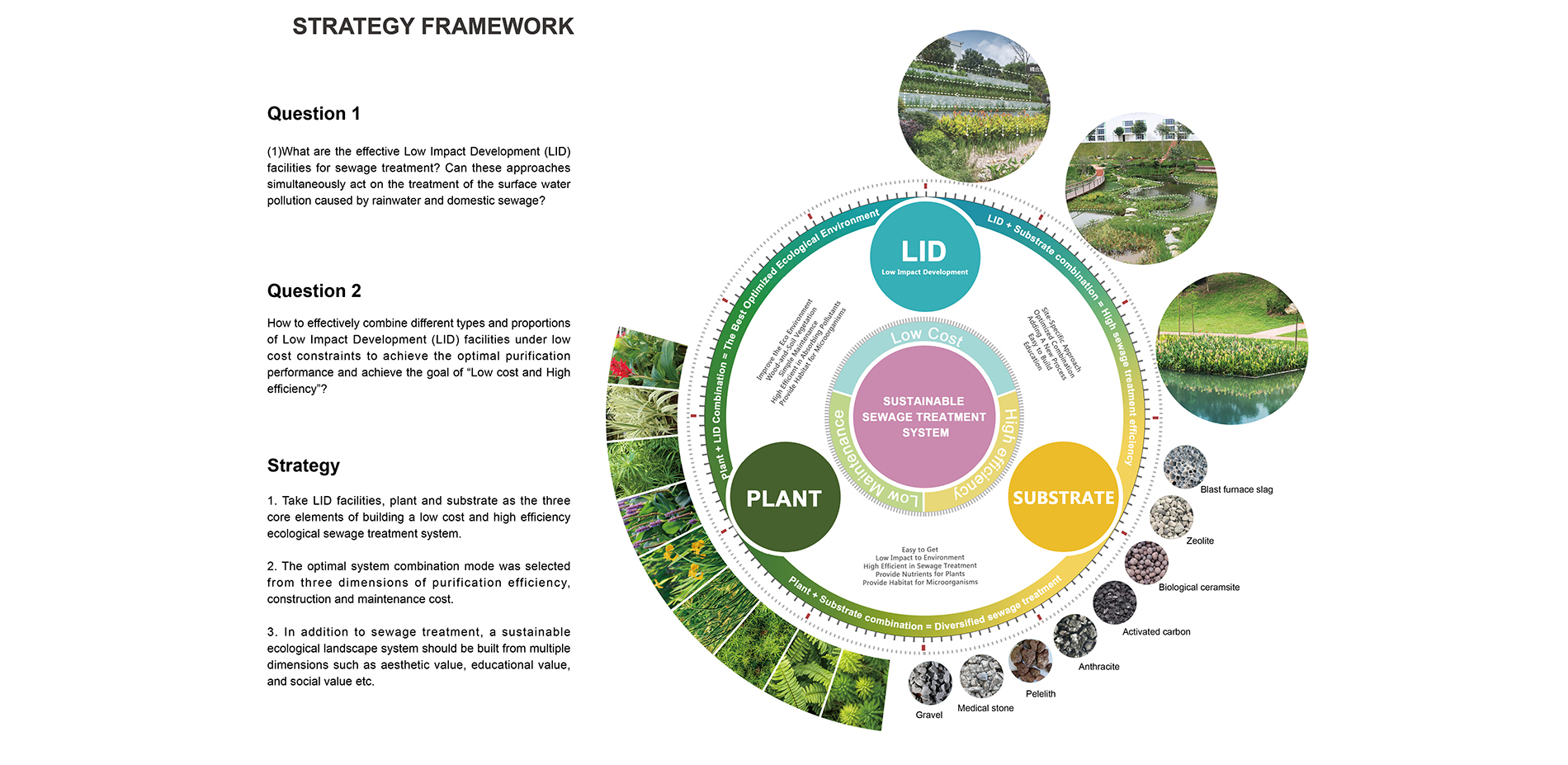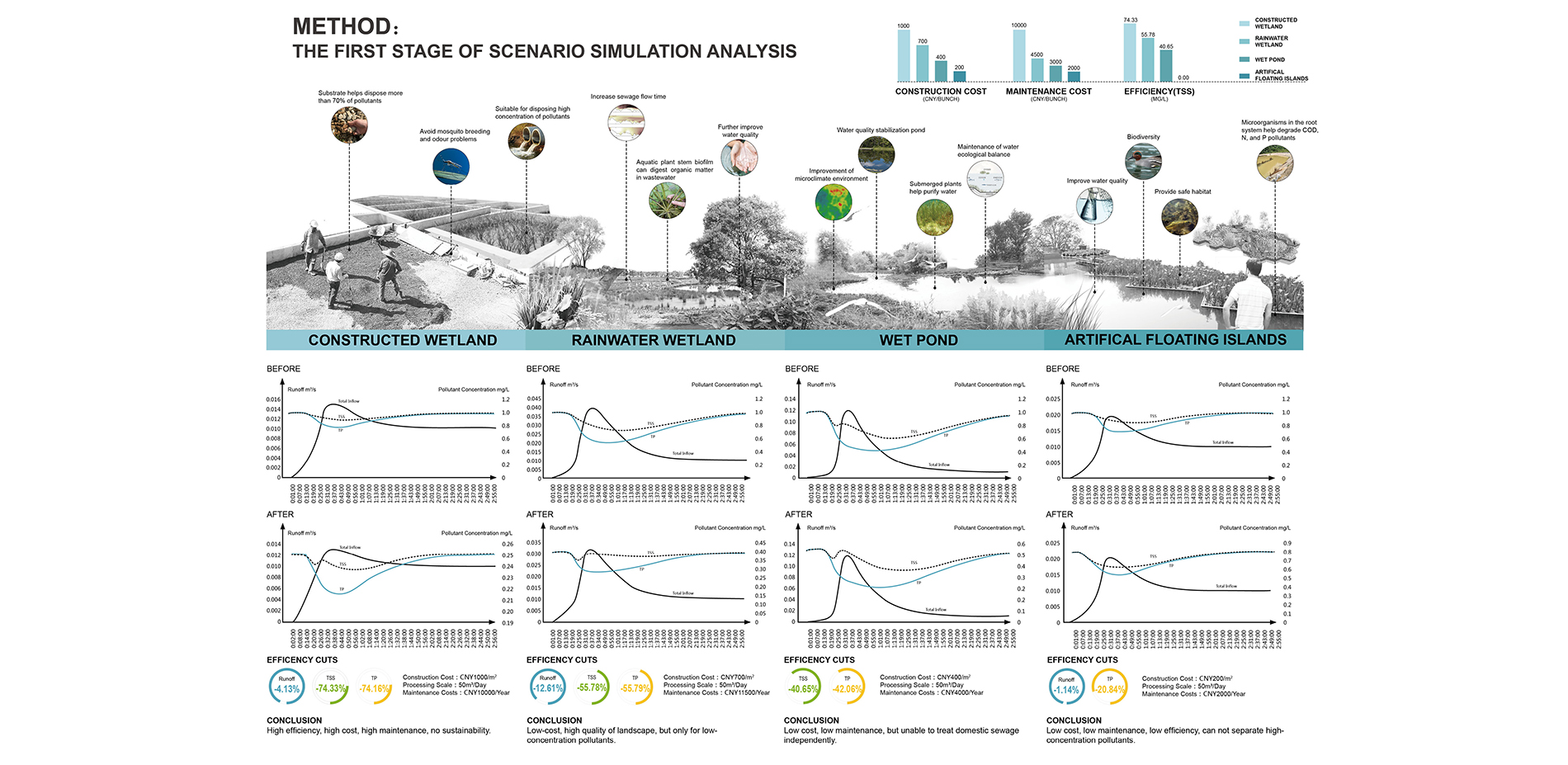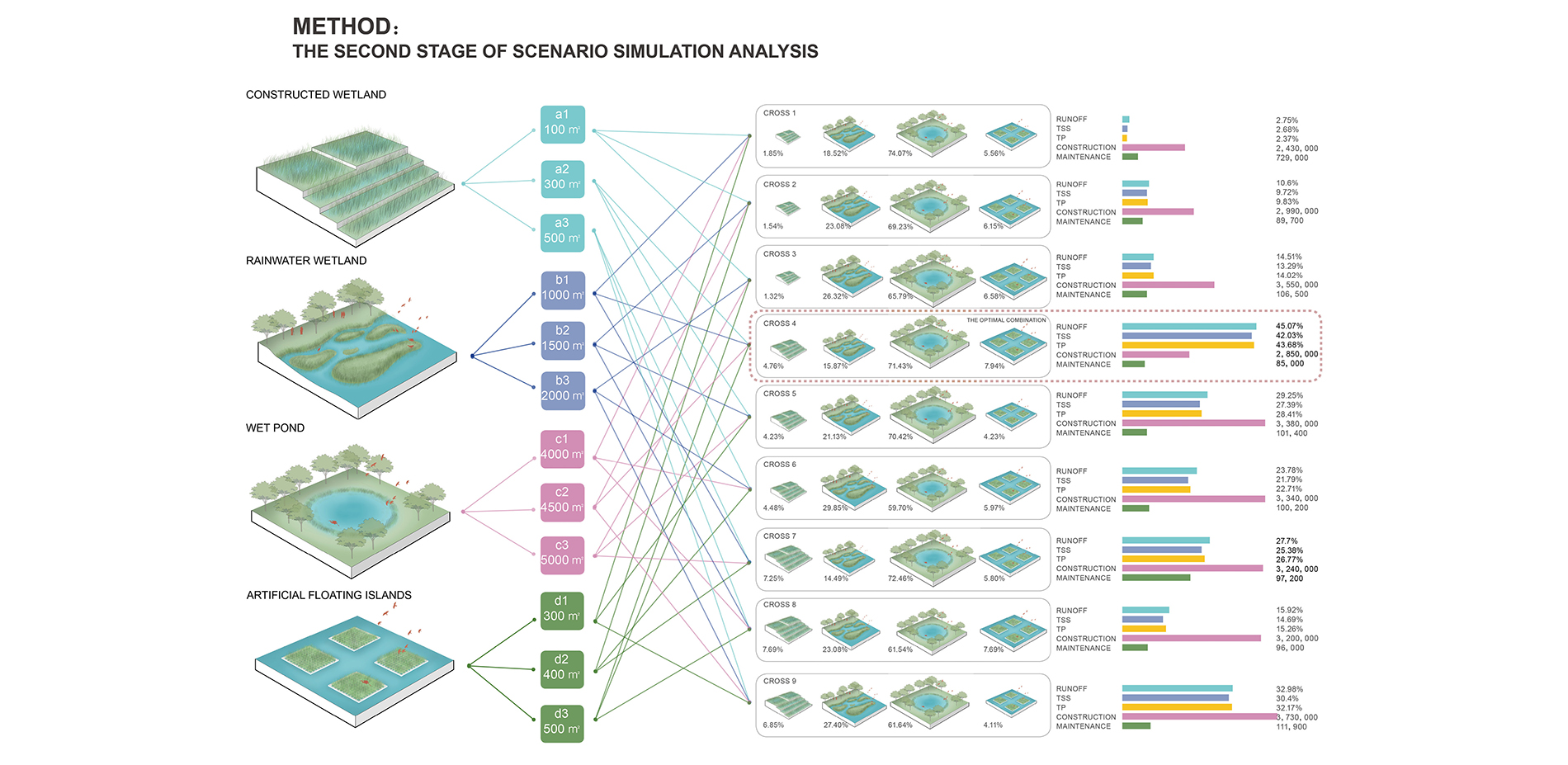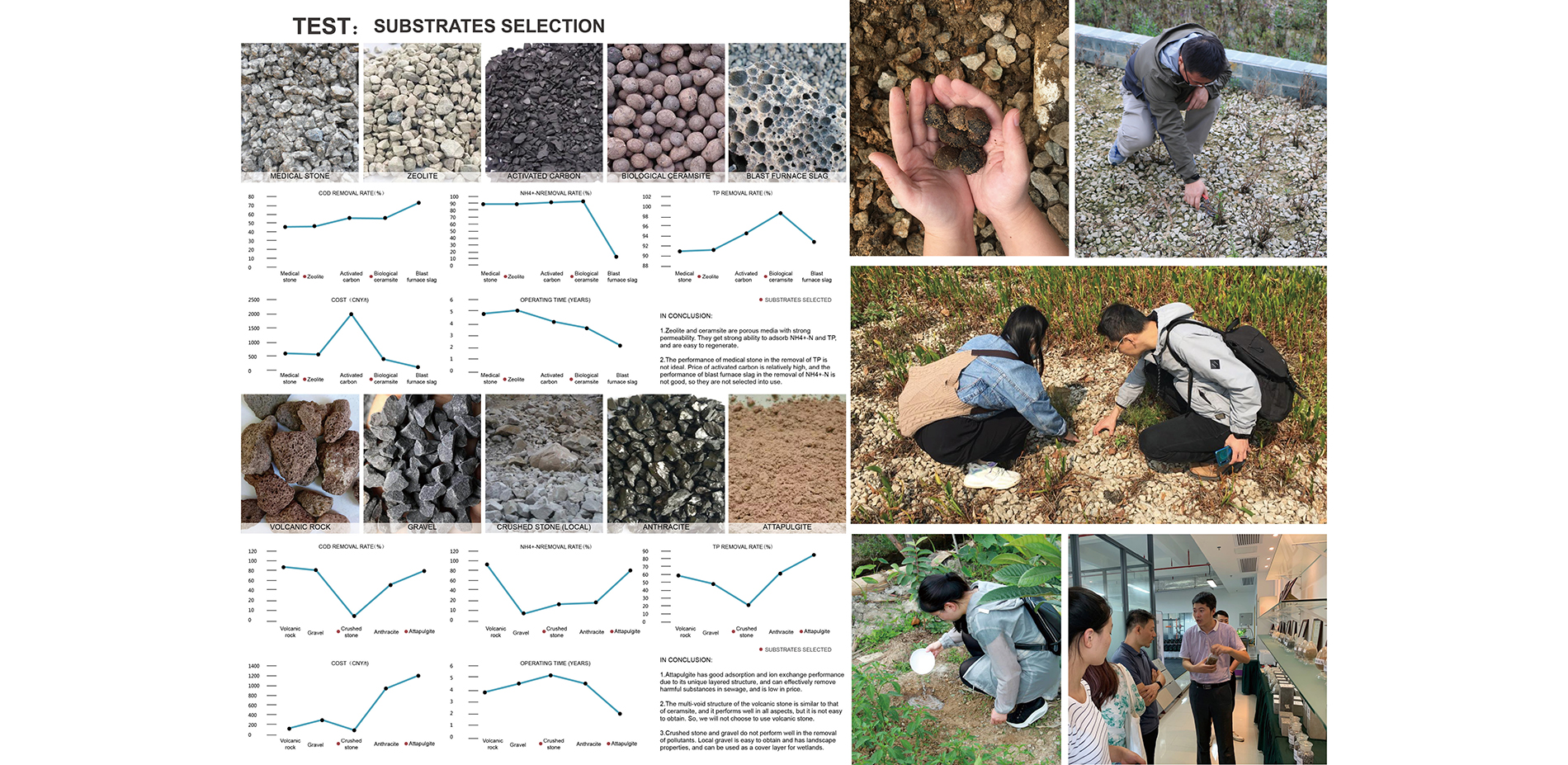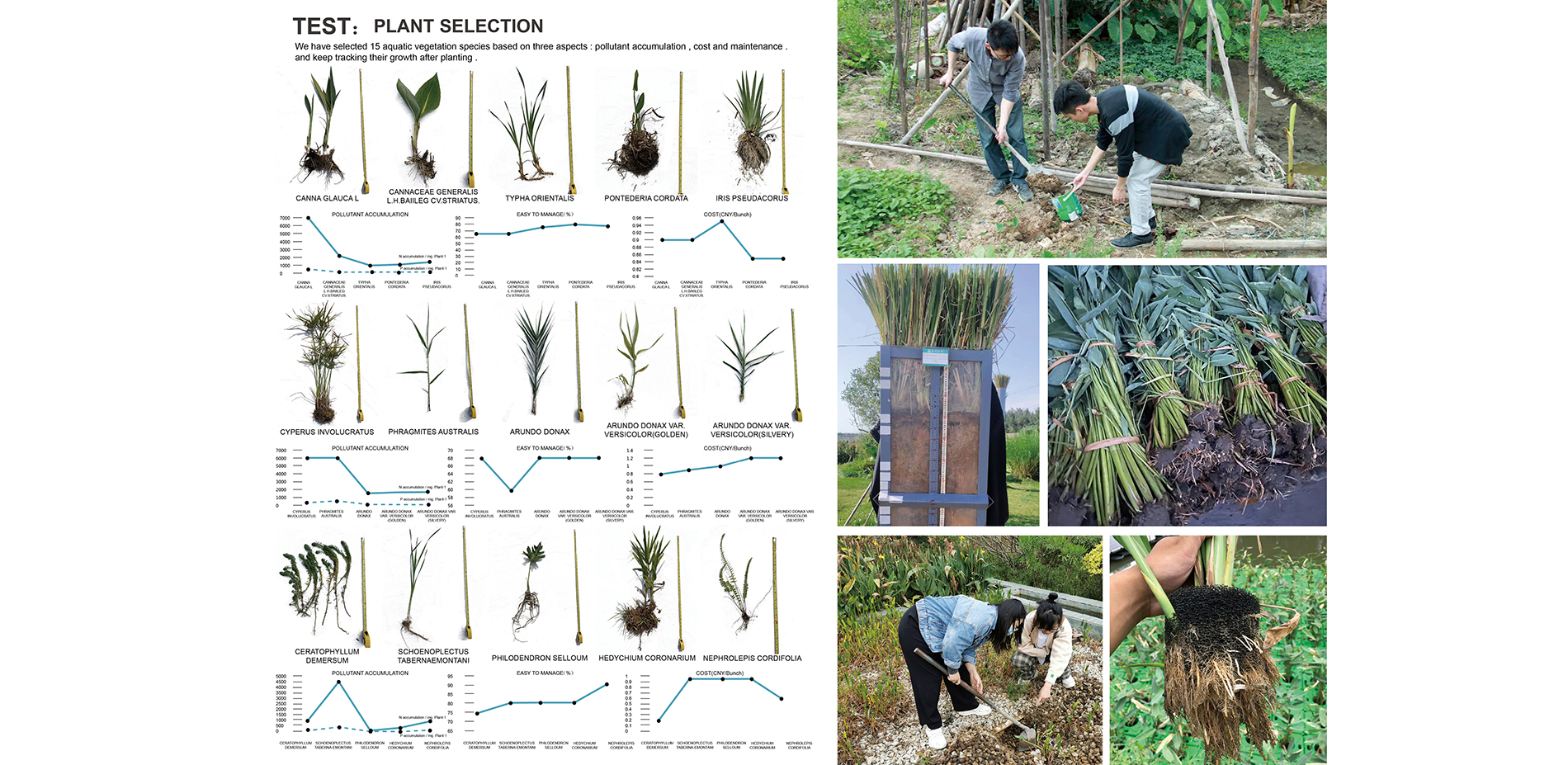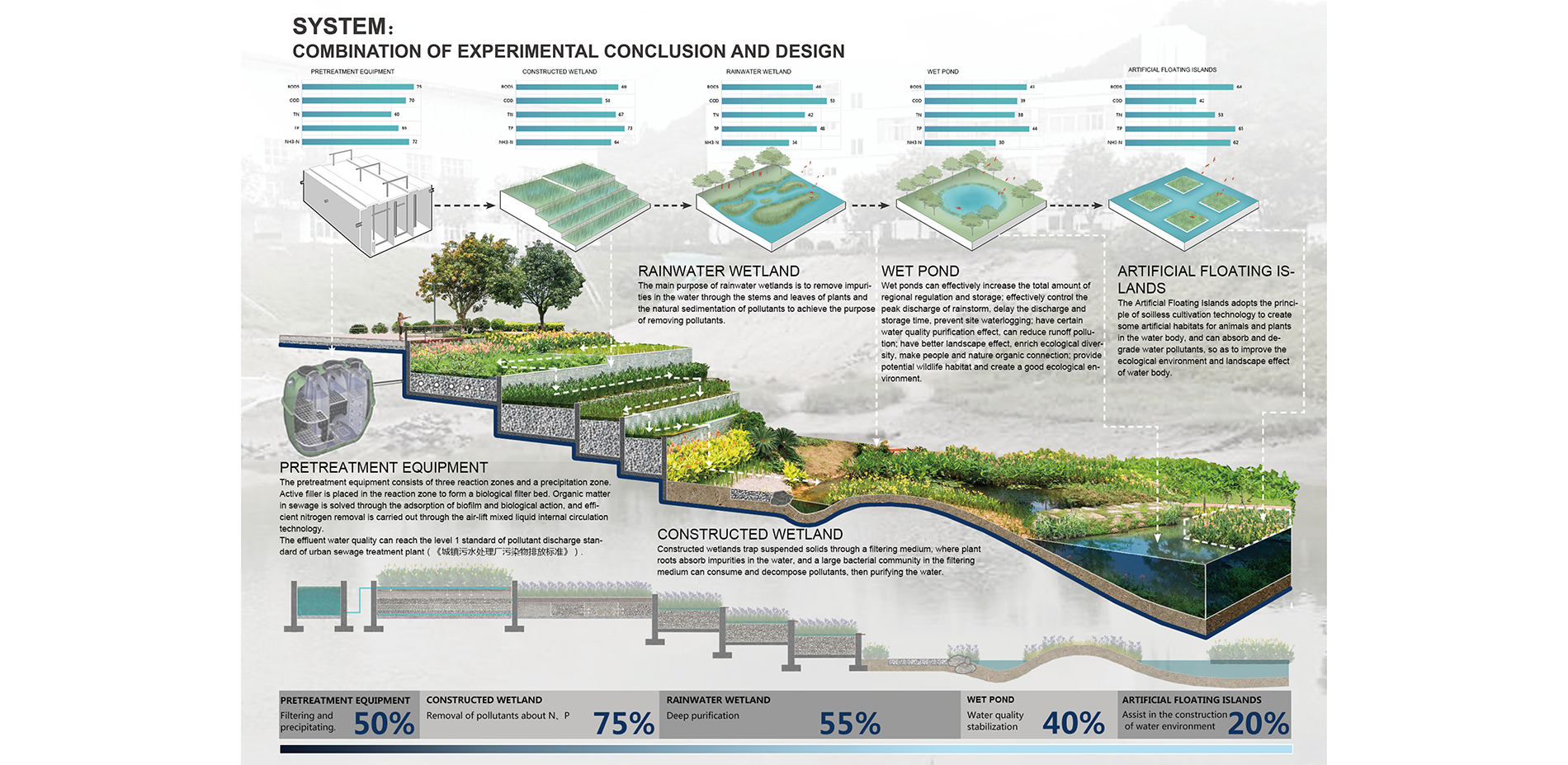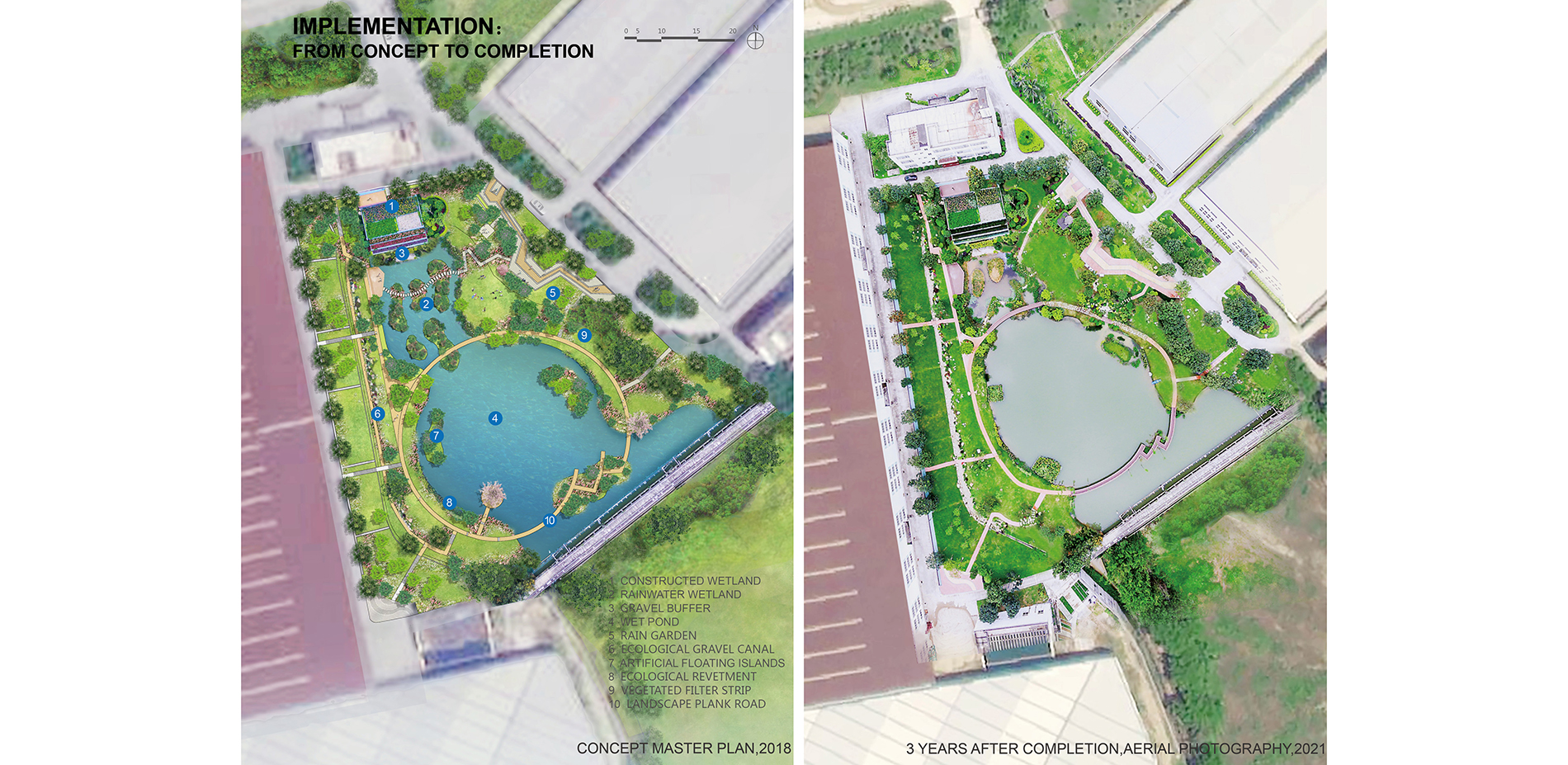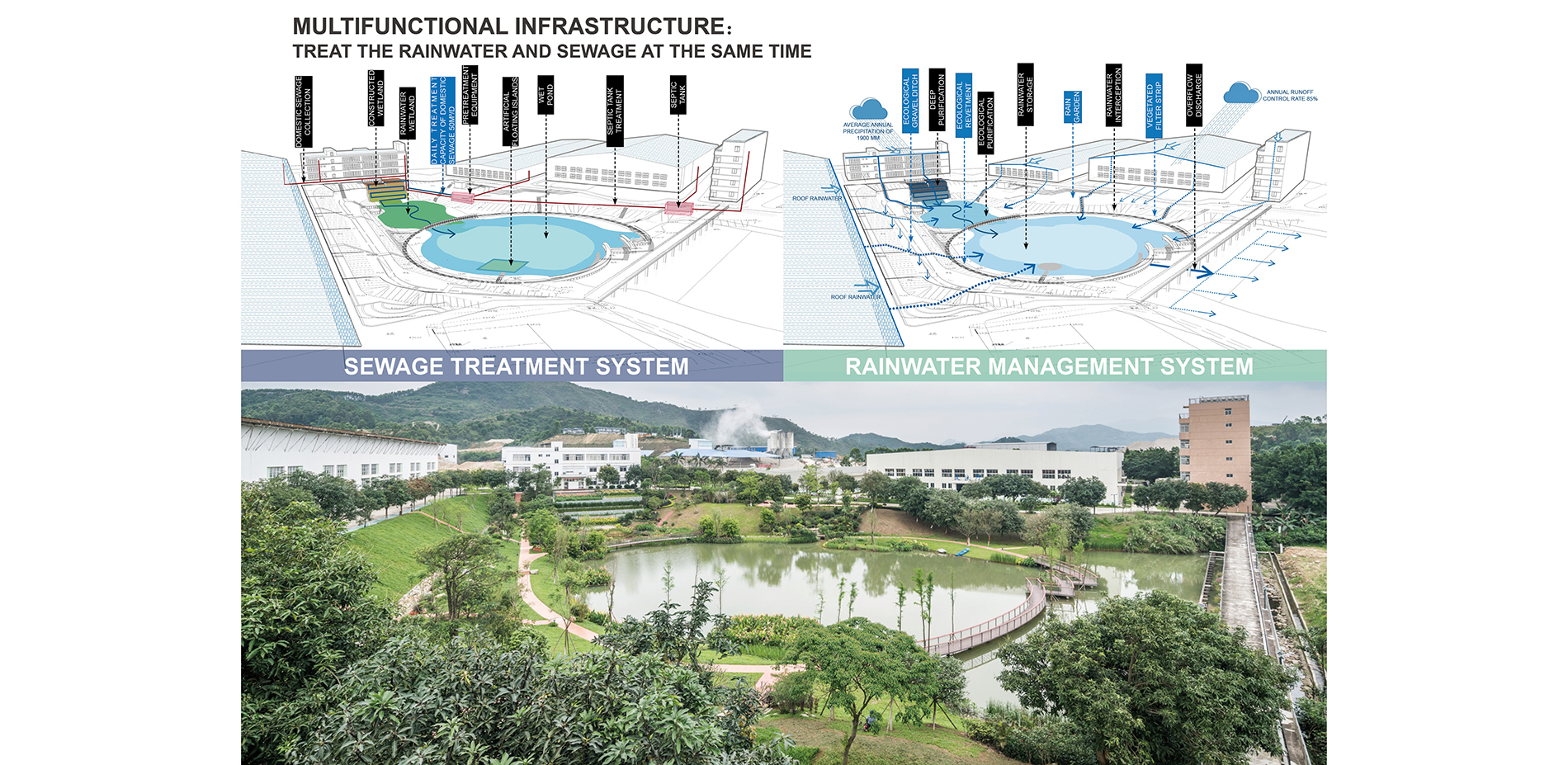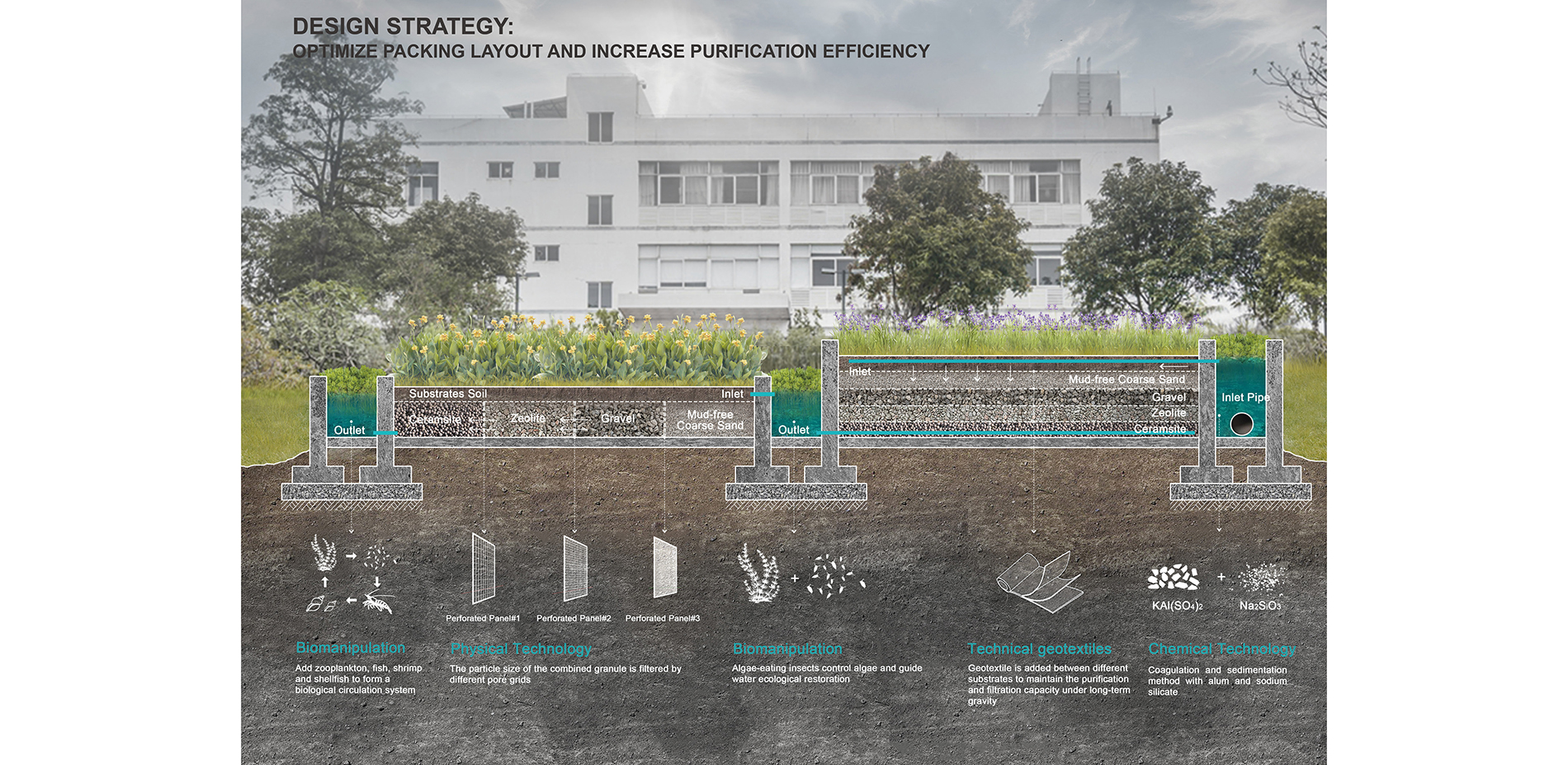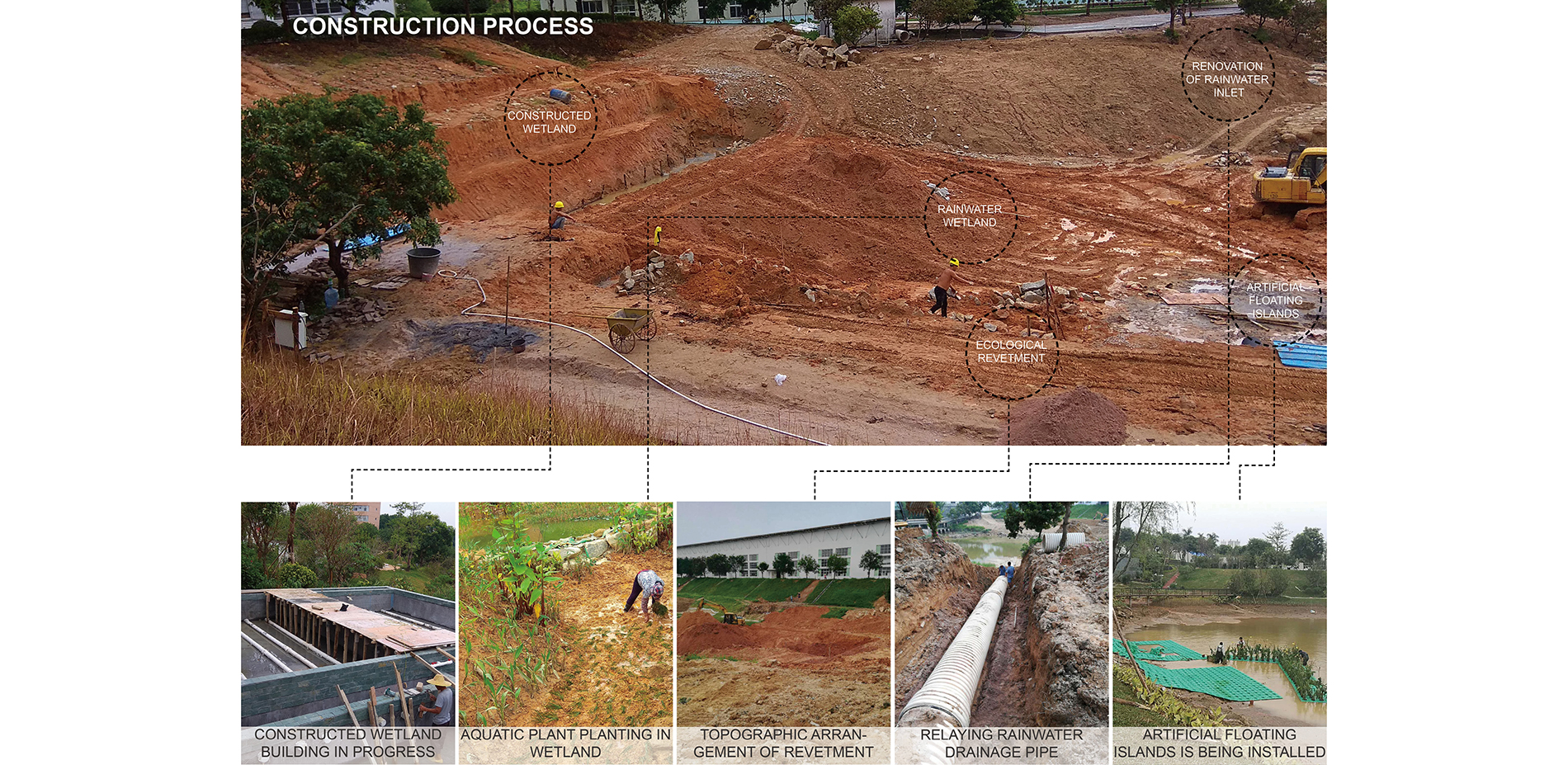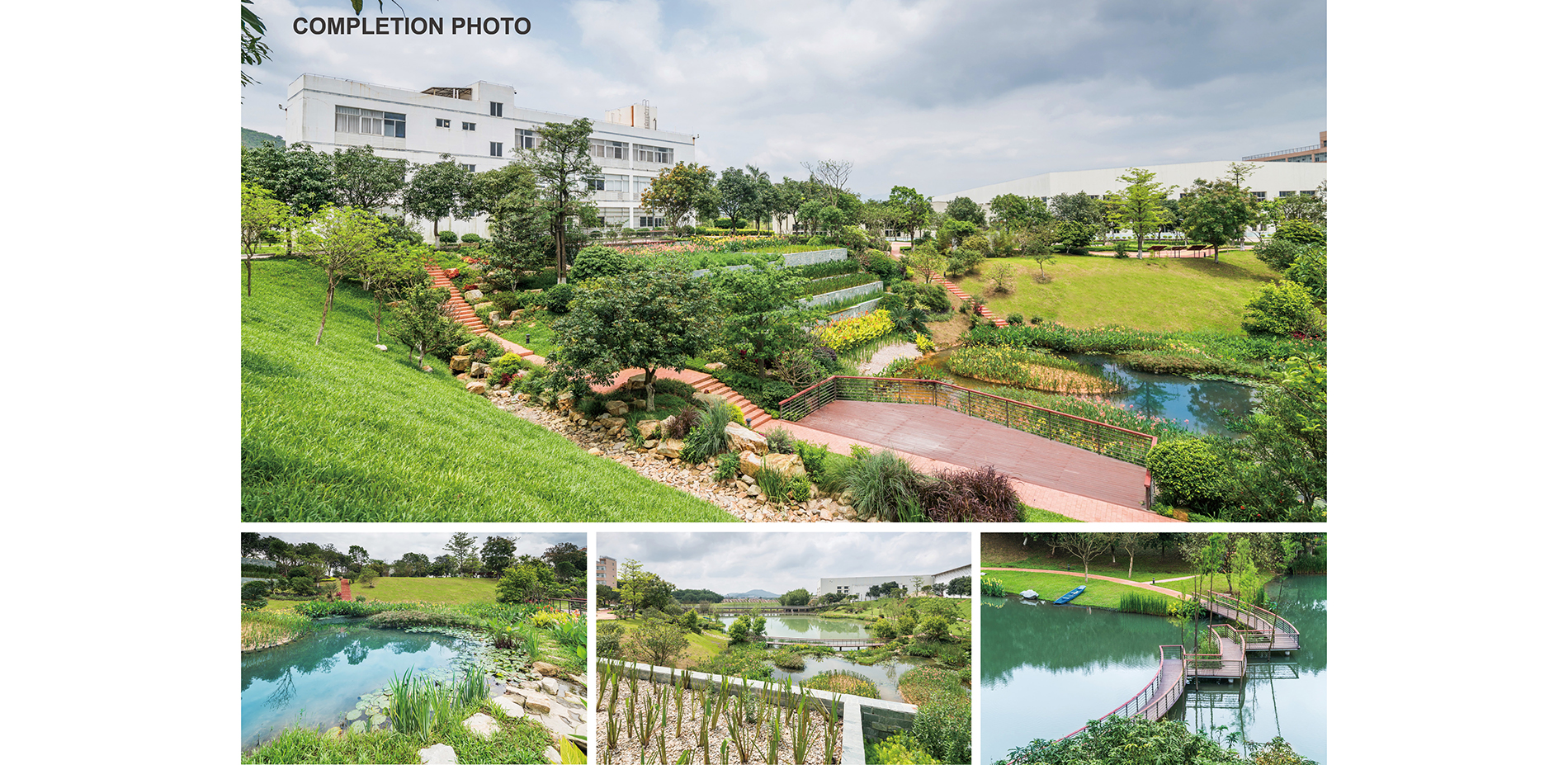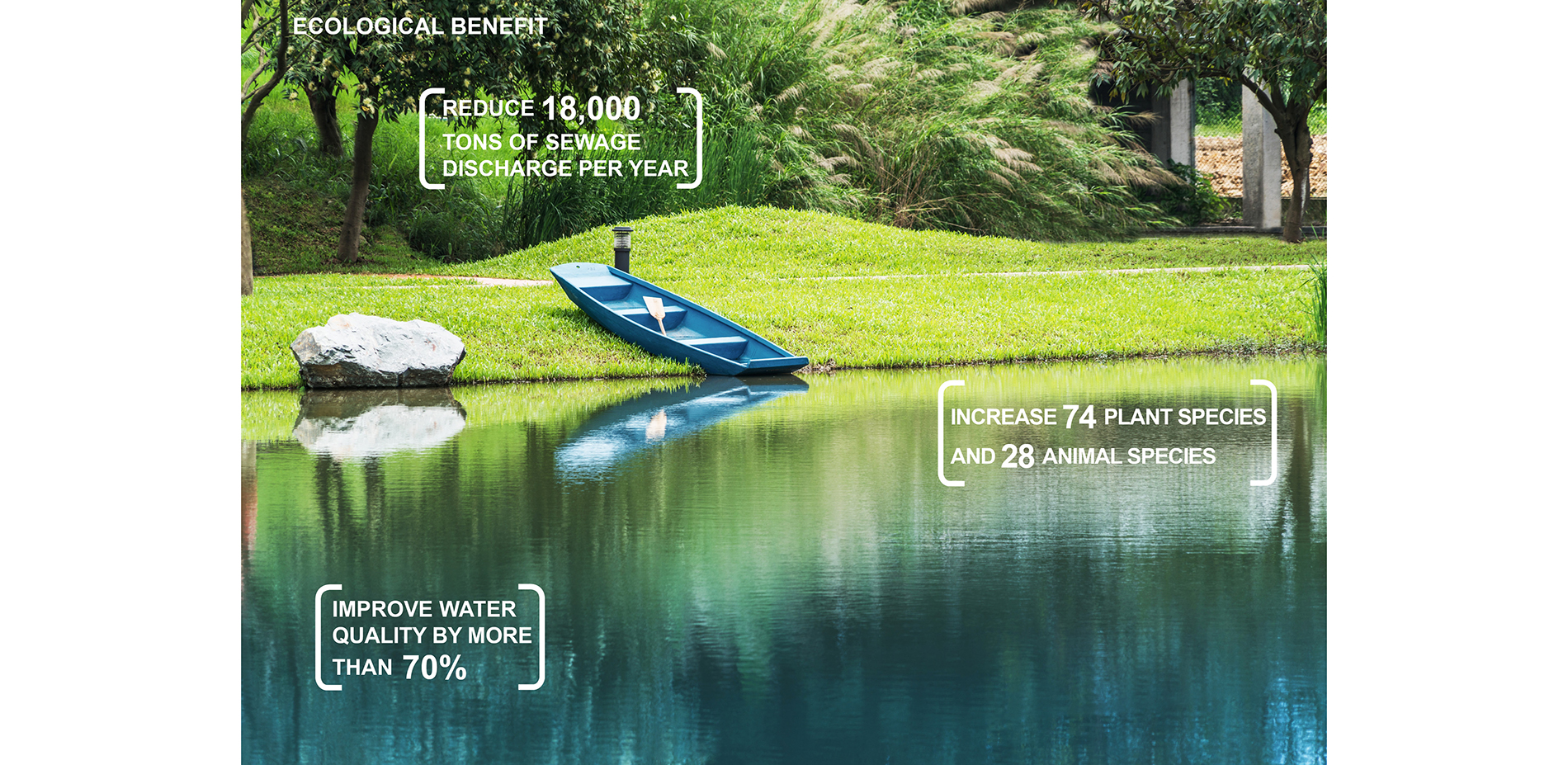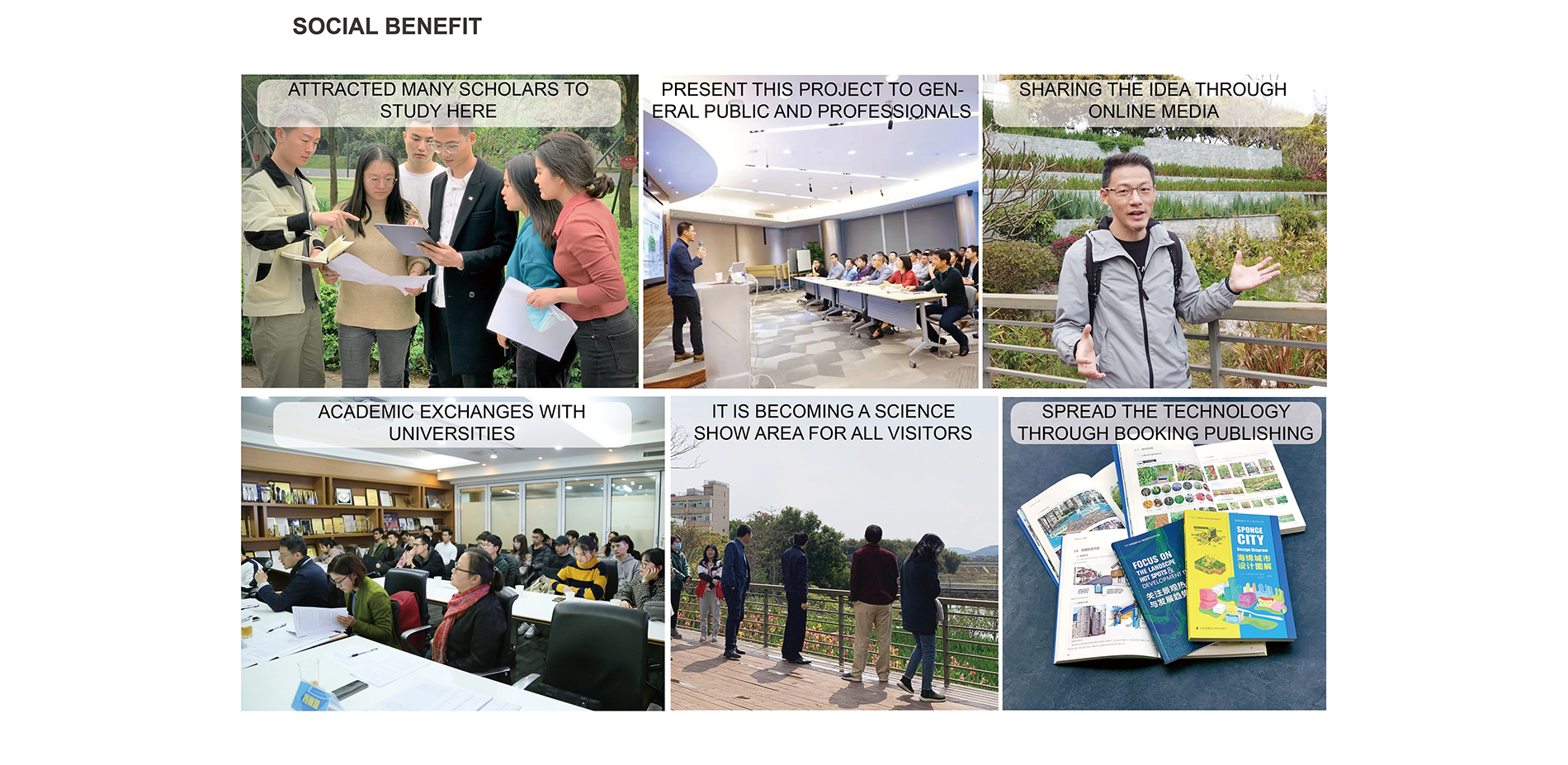Low-cost and High-efficiency: Use Low-Impact Development Facilities to Build an Ecological Sewage Treatment System for Remote Areas
Honor Award
Research
Qingyuan, Guangdong, China
GVL Design Group
Client: Guangdong Research Institute of Water Resources and Hydropower
Addressing the age-old problem of sewage with an “elegant simplicity,” this project aims to reduce the level of untreated sewage entering the environment with low-cost, low-impact development solutions that would be easy to implement even in remote areas. Through a site-specific case study marrying stormwater management with sewage treatment, the project demonstrates a holistic system that capitalizes on selected plant species and substrates for cleansing, while also serving as a model for similar efforts within the region and beyond.
- 2021 Awards Jury
Project Credits
Tao Peng, GVL Design Group, Chief Landscape Architect
Jie Luqiu, GVL Design Group, Principal & Research Director
Jingyi Cao, Yingsheng Liu, GVL Design Group, Senior Researcher
Weiqun Cai, Xiaofen Guan, Wenjuan Cui, Guangsen Zhou, GVL Design Group, Landscape Architect
Jian Zhang, Guangzhou Huahui Landscape Engineering Co., Ltd, Construction Project Director
Shaolin Lu, Rongshou Lin, Guangzhou Huahui Landscape Engineering Co., Ltd, Construction Project Manager
Guangsi Lin, Department of Landscape Architecture, School of Architecture, South China University of Technology (SCUT), Chairman and Research Director
Mengyun Chen, Jiajun Zeng, Nanxi Wang, Weiwei Chen, Department of Landscape Architecture, School of Architecture, South China University of Technology (SCUT), Research Partners
Fengzhe Jin, Photographer
Project Statement
Many undeveloped areas in the world are affected by a series of problems caused by improper sewage treatment, such as soil contamination, groundwater pollution and biodiversity loss, leading to negative effects on human well-being. The issues in these areas are usually further exacerbated by weak economic performance and poor infrastructure. Rather than high-cost engineering solutions, the focus should be on landscape approaches with low maintenance costs and high operational efficiency to solve sewage treatment problems in undeveloped areas.
The Feilaixia Water Conservancy Experimental Base in the remote mountainous area of South China has been selected as a research case for these challenges. This project adopts the method of “research by design”, through field study, adaptive modeling Storm Water Management Model (SWMM) and orthogonal experiments, to quantitatively analyze and compare the wastewater treatment strategies of different Low Impact Development (LID) facility combinations in terms of construction cost, maintenance cost, substrate and the plant’s purification performance. The result of this project demonstrates a "low-cost-high-efficiency" solution for sewage treatment issues in undeveloped areas.
Project Narrative
Research Background
According to the data released in the Healthy Environment Healthy People (Nairobi, 2016) by the United Nations Environment Programmed (UNEP), more than 80% of the world’s sewage is discharged into the environment without treatment, especially in remote areas in developing countries. Environmental pollution caused by sewage threatens human well-beings, however, the traditional sewage treatment facilities for urban areas require high construction and maintenance costs that are difficult to implement. Unlike traditional engineering approaches, this project adopts a "Research through Design" method, uses the 15,000m2 contaminated central pond area and surrounding areas of the Feilaixia Water Conservancy Hub as the research core.The site is located in a remote area, with under-developed municipal infrastructure and limited construction funds, typical of a undeveloped area. Furthermore, the sewage from the research zone, office and living area on the site have been only treated with basic secondary septic tanks, and directly discharged into the pond of the park. The water quality of the pond has deteriorated year by year, which does not even meet the requirement for agricultural irrigation prior to the works. Meanwhile, the renovation was restricted due to a shortage of funds, which result in serious damage to the environment and biodiversity of the pond and surroundings.
Research Questions
Can landscape responses replace the high- cost traditional engineering methods and using ecological sewage treatment methods with "low maintenance cost and high operation efficiency" to solve the sewage treatment problems in the undeveloped areas? The project aims to address:
(1) What are the effective Low Impact Development (LID) facilities for sewage treatment? Can these approaches simultaneously act on the treatment of the surface water pollution caused by rainwater and domestic sewage?
(2) How to effectively combine different types and proportions of Low Impact Development (LID) facilities under low cost constraints to achieve the optimal purification performance and achieve the goal of “Low cost and High efficiency”?
Research Methods
Based on the above research questions, landscape architects led the research of the project and collaborated with specialists in the fields of sewage treatment, phytology and water conservancy engineering to consult on various specialist areas.
The primary research methods are as follows:
(1) Literature Review: Various books and publications related to sewage treatment technologies. Sewage purification capacities of different wetland plants and substrates mixes were analyzed to inform the selection of suitable LID facilities as well as a list of experimental plants and substrates with high-efficiency sewage purification capacity.
(2) Field Work: Selected plants and substrates are tested and the data is collected for their actual performance.
(3) Market Research: Based on the statistical analysis of the field research on local material suppliers and nurseries combined with online big data, the materials with high-efficiency cost performance are determined.
(4) Scenario Simulations Analysis: The first stage: The research team is to build models on the Storm Water Management Model (SWMM) platform based on the preselected four types of LID facilities including: constructed wetland, rainwater wetland, wet pond and artificial floating islands. The control variates method will be used to simulate and analyze the pollutant treatment efficiency of the LID, and the construction and maintenance cost, the scale of the function and the service life of each LID were superimposed and analyzed.
The second stage: According to the principle of the orthogonal experiment, four LID facilities were used as combination factors, and the area of different factors was changed as the second-level factor. Based on the second-level factors, 9 types of combinations will be simulated based on the permutations and combinations of the second-level factors. The runoff control rate, the removal rate of TSS (total suspended solids) and TP (total P) were simulated respectively on the SWMM platform, and the calculation of construction and maintenance costs are superimposed to determine the optimal combination mode to achieve Low-cost and High-efficiency.
Research Results
(1) The combination of four types of LID facilities including constructed wetland, rainwater wetland, wet pond and artificial floating islands, can both meet the requirements of treating storm water runoff pollution and domestic sewage at the same time, thereby replacing traditional engineering methods.
(2) When the four LID facilities of: constructed wetland, rainwater wetland, wet pond and artificial floating islands account for 4.76%, 15.87%, 71.43% and 7.94% respectively, the sewage treatment strategy has the optimal efficiency on the site.
Design Strategies
In order to maximize the capacity of LID facilities on the site, the research team proposes 2 innovative design strategies which matches with site characteristics based on the result of the research.
1. To resolve the huge difference of elevation on site, the constructed wetland was designed as terraces. On the one hand, it resolves the height difference of 8 meters of the site, on the other hand, it maximizes the water body area, so as to maximize the decontamination efficiency, at the same time, it can also provide more potential for landscape opportunities.
2. To increase the contact area and time between the constructed wetland and the sewage, we introduced a brand-new vertical layout for substrates instead of the traditional horizontal layout, this arrangement demonstrated higher efficiency in decontamination.
Monitoring the Results
This project was completed in 2018 and has been in operation for three years. After tracking and monitoring, the Hash multi-parameter water quality online monitor is used by the research team to monitor water quality on BOD5, NH3-N, TP, pH, DO and other indicators. According to the monitoring data, the water quality on the site has recovered to Grade III surface water quality standard(centralized portable water source areas, fish and shrimp overwintering, migratory passages, and swimming areas according to the Surface water quality standards of the People’s Republic of China), and a diversified and stabilized water ecosystem is gradually established.
Research Significance
The research project solved the sewage treatment problem of the site with a relatively low construction cost of CNY¥250/㎡, saving nearly 40% of cost compared to traditional engineering methods. At the same time, the original poor ecological sewage pond and its surrounding environment is transformed into a picturesque landscape garden and eco-friendly habitat. This research project demonstrates a “low-cost-high-efficiency" landscape strategy to solve the problem of sewage treatment in remote areas. The project has been promoted as a water ecological technology demonstration area and has received visits and attention from all over the country. It plays a role in science popularization and helps to enhance the public's ecological awareness. More importantly, this research is highly replicable and provides a universal solution for areas suffering from sewage issues all over the world, helping to improve basic living conditions in undeveloped and remote areas.
Plant List
- Canna glauca
- Cannaceae generalis L.H.Baiileg cv.Striatus
- Typha orientalis
- Pontederia cordata
- Iris pseudacorus
- Cyperus involucratus
- Phragmites australis
- Arundo donax
- Arundo donax var. versicolor (Golden)
- Arundo donax var. versicolor (silvery)
- Ceratophyllum demersum
- Schoenoplectus tabernaemontani
- Hedychium coronarium
- Nephrolepis cordifolia
- Philodendron selloum
